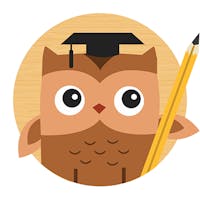Venkat Ratnam developed WhizRead, a multisensory reading support program, out of pure fatherly love.
In 2013, a realization washed over Ratnam and his wife. While they both had successful careers, they were paying a cost. Ratnam wanted to spend more time with their two children, then ages nine and five years old—particularly with his son, who was struggling with learning difficulties. “How could we let our children grow without much support?” asks Ratnam.
So Ratnam left his 23-year career as a professional services leader for software companies to create a solution that would help his children and others. Since he now had the opportunity to manage his own time, Ratnam had the chance to drive his children to school and after-school activities, working with their school’s PTA, volunteering for the science fair and helping with homework every evening.
One night, during a reading comprehension assignment, Ratnam’s son got stuck on a particular word: “stagecoach.” Ratnam did his best to explain the word and they moved on. Even so, his son continued to stop throughout the text and ask for the meaning of many other words.
“I thought, ‘What happens when I’m not there with him?’” recalls Ratnam.
A dictionary might help, as would firing up Google to search for definitions, images or videos. But that worried Ratnam. After four or five words, wouldn’t fatigue or even distraction set in?
In class, Ratnam’s son had a resource teacher assigned to support him. But “the tools were not there to make him a self-confident and an independent reader,” Ratnam recalls. “I wanted to help our son learn to fish rather than doing the fishing for him.”
And not just him. “What about the many other struggling students whose parents can’t help with homework because of work commitments or language barriers?” Ratnam asks. He suspected that other students, including those whose parents struggle with language themselves, could use the same kind of reading support that he hoped to provide for his son. As one of Ratnam’s son’s teachers said, even good readers don’t necessarily comprehend everything they read. “How could I help all of these children with comprehension regardless of their level of reading fluency?” Ratnam wondered.
That’s when his software experience and the time spent earning a master’s degree in computer applications kicked in. Ratnam began envisioning an app that would read text out loud, provide definitions of words, show images and videos, and play sounds to promote reading comprehension—all with a tap on a word or phrase. A child won’t have to stop reading to get that additional context and understanding. Ratnam came to believe that this app would help children better comprehend what they read. His daughter put a name on it: “WhizRead,” she said, because it aims to “help you become a whiz at reading.”
The Path to WhizRead
Drawing on his education and work experience, Ratnam began to architect the product.
He started with the image that had stumped his son—the “stagecoach” passage. His initial HTML mockup of a reading comprehension passage showed how students could move the mouse over or tap on a word to hear it pronounced, read a definition, see an image or watch a video. Teachers at his children’s school cheered on Ratnam’s work. They appreciated the value of a tool like this for students who speak English as a second language, students with learning difficulties, auditory and visual learners, and even for children who read well but don’t necessarily comprehend well.
Using his own funds, he plunged into building a prototype—including contracting a development team—and worked while his son and daughter were at school or after they went to bed, answering questions, reviewing progress, gathering content, writing test cases, and modifying the specs.
The Secret Sauce
The first step to creating the prototype was developing the heart of WhizRead, its content enrichment engine. This backend software takes text added to the WhizRead app and enriches it with definitions, images, videos, sounds—and a voice synthesizer to read the passage out loud.
WhizRead’s proprietary algorithm identifies key phrases, then safely searches images and videos and provides contextual definitions. The engine integrates Natural Language Processing (NLP) with industry-standard dictionary datasets and search engines in order to pull up a context-sensitive meaning.
“Say, for example, students are reading about Abraham Lincoln’s childhood and come across the sentence, ‘Abraham Lincoln was born in a log cabin in the woods,’” says Ratnam. “‘Born,’ ‘cabin,’ ‘woods’—they're all individual words that a student could find definitions for.” He and his team then wrote custom logic to identify logical and meaningful related phrases—i.e. "log cabin in the woods"—for the reader.
A student can then see a corresponding image or video (and in some cases hear a sound) for the phrase. “Natural language processing really helped in the development of my content enrichment engine. That, along with our proprietary algorithm and the ability to transform any plain text to rich content, is really my secret sauce,” says Ratnam.
All of this combines with WhizRead’s backend content management system so anyone—including teachers—can compose, upload, enrich and publish their own content to the app. Whether it’s a passage about ancient Egyptian art, characters in "Charlotte’s Web" or planets in the solar system—Ratnam says that his app will enrich it.
The iPad App
Currently, WhizRead is available as a free iPad app on the Apple App Store. It contains some sample, enriched reading comprehension passages. More importantly, teachers and parents can compose, upload, enrich and publish their own passages.
Ratnam plans to release Android and web apps so students can use WhizRead with Chromebooks, laptops and Android tablets. He’s also working on new functionality that will allow teachers to share reading comprehension assignments with groups of students, monitor and grade student progress, and get reading comprehension analytics.
To Ratnam, what matters most is the potential for WhizRead to create a level playing field for all children regardless of their socio-economic circumstances. He envisions a day when teachers—and parents—can use the WhizRead app to create, compose, enrich and assign reading comprehension passages to their children. “They will no longer have to give away printed sheets!” he says. “They can also rest assured that they have provided all their children the same tools to help them succeed.”
Ratnam says, “Learning doesn’t need to be regurgitative. Some children read and comprehend better by hearing and some by visualizing; others prefer a combination. That’s the reason I created the WhizRead multi-sensory iPad App—to help all children.”



